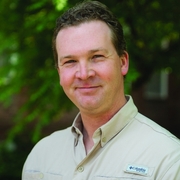- Level Foundation
- Duration 15 hours
- Course by Dartmouth College
-
Offered by

About
This course will help you learn that the shapes of bones reflect adaptations and the behaviors that animals frequently participate in. Understanding this relationship is critical for reconstructing the activities of animals in the past. In this course, you will participate in two such activities. You will examine the femurs from a number of different species. You will also explore how footprint data is used to estimate the height of a species. You will participate in a dig at the Koobi Fora fossil site in Kenya. Furthermore, you will explore what a phylogenetic tree is and how they help in discovering the relative relatedness of a group of species. Virtually you will visit the Hall of Human Origins at the Smithsonian's National Museum of Natural History. This course will also help you understand the world of fossils. How fossils are formed, how paleontologists find fossils, how they are examined to find information will also be discussed here. Every module of this course has been created with the intention of a “hands-on” learner experience, where you can play around with and learn from 3D renditions of different human and animal fossils. You will explore fossil sites as well.Modules
Welcome to the Course
2
Discussions
- Introduce Yourself
- Learning Journal: My Goals
7
Readings
- Introductory Reading
- Syllabus
- Book: First Steps: How Upright Walking Made Us Human
- Coursera Code of Conduct
- Coursera Honor Code
- Discussion Tips and Guide
- Learning Journal
Human Skeleton Intro Activity
2
Assignment
- Inquiry Activity #1 - The Humerus
- Inquiry Activity #1 - The Pelvis
1
Readings
- Human Skeleton: Intro Activity
Human Skeleton Intro Activity1
1
Assignment
- Inquiry Activity #1 - Femur Matching Activity
3
Readings
- Activity Description
- Femur Matching Activity
- Explainer: Femur Matching Activity
Footprint Data
2
Discussions
- Inquiry Activity #1 - Your Footprint Data
- Inquiry Activity #1 - Estimating the Height of Individuals from Laetoli
2
Readings
- Using Footprint Data
- Recap: Using Footprint Data
Hypothetical Fossil Site: Identify the Bipeds
1
Assignment
- Hypothetical Fossil Site: Identify the Bipeds
2
Readings
- Hypothetical Fossil Site: Identify the Bipeds
- Explainer: Identify the Bipeds
Phylogenetic Tree Activity
1
Assignment
- Inquiry Activity: Evolution #1-4
3
Readings
- Phylogenetic Tree Based on Anatomy
- Phylogenetic Tree Based on Genetics
- Inquiry Activity: Last Common Ancestor
March of Progress
1
Assignment
- Inquiry Activities
1
Discussions
- March of Progress Visual
The Hall of Human Origins
1
Assignment
- Visiting the Smithsonian National Museum of Natural History
1
Discussions
- Learning Journal: Visiting the Smithsonian
10
Videos
- Video: Welcome to the Hall of Human Origins
- Video: A Day In the Life of Lucy and Australopithecus
- Video: Walking in Their Footsteps
- Video: From Bipedalism to Tool Use
- Video: Learning From Fossils
- Video: The Origins of Controlled Fire
- Video: Reflections on Learning to Walk
- Video: Paleoart
- Video: Homo sapiens
- Video: Creating Emotional Connections
1
Readings
- Explore More: The Hall of Human Origins
Learning From Fossils
4
Videos
- Video: Learning From Fossils
- Video: Dating Fossils
- Video: Finding Fossils
- Video: Formation of Fossils
Experiencing Human Origins in Southern Africa: A Dartmouth Learning Story
3
Videos
- Experiencing Human Origins in Southern Africa - Part 1
- Experiencing Human Origins in Southern Africa - Part 2
- Experiencing Human Origins in Southern Africa - Part 3
Learning Journal: What's Next?
1
Assignment
- Science in Action
1
Discussions
- Learning Journal: What's Next?
Auto Summary
"Inquiries Into Bipedalism" is a foundational course in Science & Engineering, focused on understanding how bone shapes reflect animal behaviors and adaptations. Led by Coursera, this immersive 900-hour course includes hands-on activities such as examining femurs, estimating species height from footprints, and virtual fossil digs at Koobi Fora in Kenya. Learners will also explore phylogenetic trees and the fossil discovery process. Ideal for science enthusiasts, the course offers both Starter and Professional subscription options, providing an engaging experience with 3D fossil renditions and virtual museum visits.

Jeremy DeSilva


